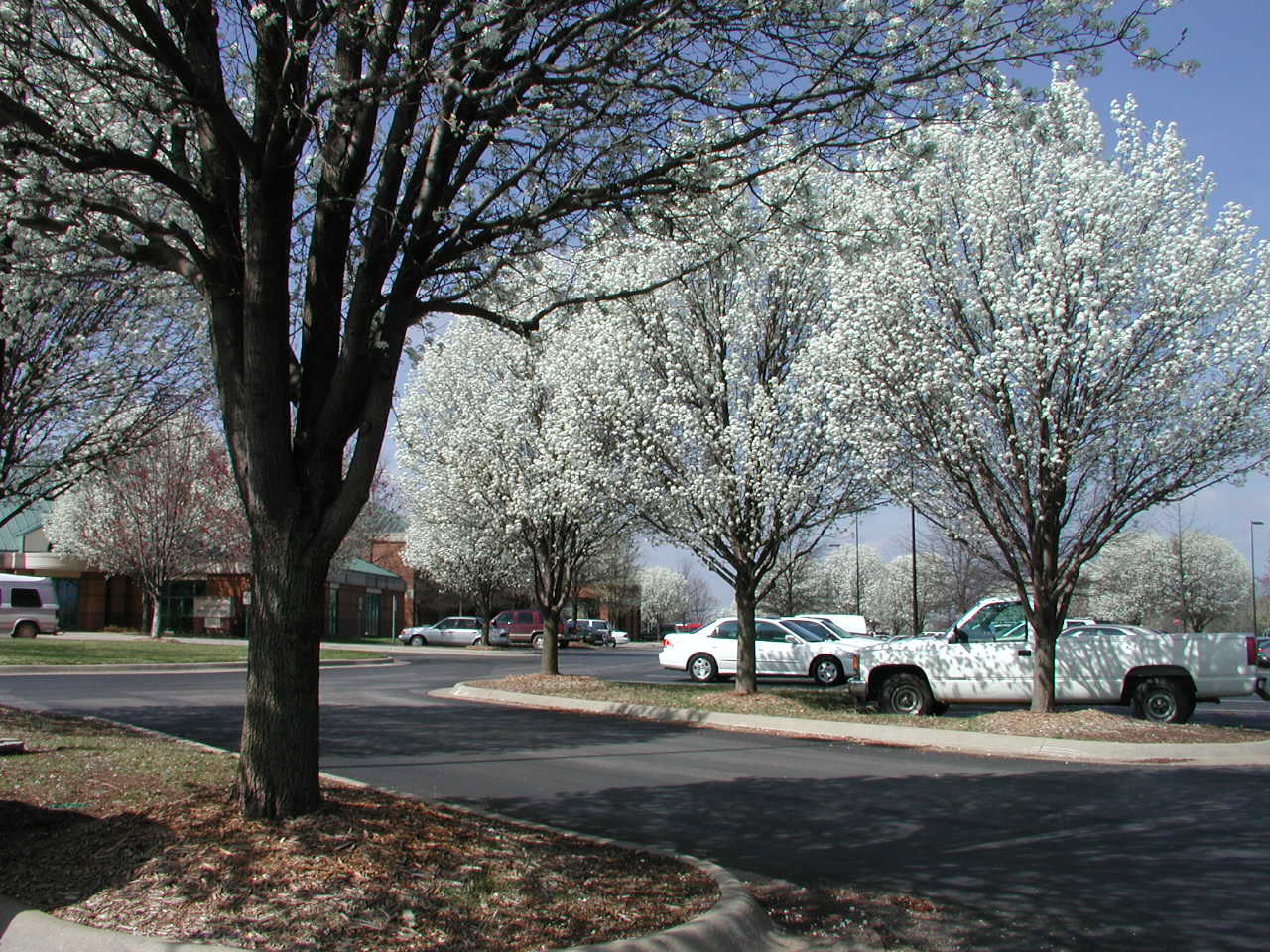Resource Library
Plant of the Week: Pyrus calleryana; Bradford Ornamental Pear
I searched my computer files this morning, trying to come up with a plant to write about. To my surprise I discovered I have never covered Bradford ornamental pear (Pyrus calleryana “Bradford”), perhaps the most hated invasive species in the land. This is surprising, because as a horticulturist I grew up with this tree, watching it rise from obscurity to achieve the status of being the most popular tree in America in the 1990s to a spectacular burnout and fall from grace by 2000.
In my files I have an original release notice from the U.S. Department of Agriculture dated January 28, 1960, announcing the release to the nursery trade scion wood of the ornamental flowering pear they named “Bradford.” In the release, Director M. W. Parker describes it as a “vigorous, densely branched, medium-sized tree (with) ….. attractive, spur-borne, small white flowers.” They go on to describe its shiny leaves and good fall color characteristics. They ominously finish the description with: “The numerous small inedible, brown fruits which hang on the trees during the early winter until they disintegrate or are eaten by the birds are interesting in themselves.”
I first saw the tree in 1971 when a plant identification class I was taking visited a planting made about 10 years earlier where it was used in a suburban Maryland subdivision as a street tree. The trees were in full bloom, compact, symmetrical and perfectly scaled at 10 years of age to fit the suburban front yards. Over the next two decades the tree caught on big time in the nursery industry.
There were several reasons for Bradford’s meteoric rise in popularity. First, as a young tree it checks all the boxes. It grows fast, looks good in spring, summer and fall, it is adapted to a wide array of soil conditions (including poorly drained clays), and is adapted to a large part of the country where most of the nation’s population lives.
At the same time nurserymen began to notice Bradford ornamental pear, there was a major shift in nursery production and marketing. The production shift was away from growing trees either as bare root trees with sales limited to only a few weeks in the spring or as heavy, balled and burlapped plants which were difficult to handle to the user-friendly, container-grown trees. From a sales standpoint, big box stores such as Walmart, K-Mart, Lowes, and Home Depot opened garden centers and were hungry for container grown plants that would work where most of their stores were located. They especially favored plants that didn’t die so they wouldn’t have unhappy customers showing up at their stores with dead sticks in their hands. Bradford flowering pear, because it was sold without a plant patent and was cheap, easily propagated and almost always survived, fit mass market needs perfectly. By the early 1990s, it and the other knock off calleryana pear clones then being grown were the most widely propagated trees in America.
But by the early 1980s, some of the tree’s shortcomings were being talked about in the trade magazines. First, all those limbs that made Bradford pears so uniformly symmetrical were prone to split off in an ice or wind storm. Secondly, the trees didn’t read the press release and were outgrowing the medium sized designation. The first attempt at solving the problem was recommending selections with better branching habits and more narrow stature.
By the mid 1990s, however, it was hard to ignore all those vigorous, white flowering trees crowding the roadsides and abandoned lands across the country. Those small, inedible brown fruits had been discovered by the birds and were coming up everywhere. The ornamental pear had jumped the fence and had escaped cultivation. Fifty years from its introduction, the widespread environmental impact of Bradford pear was recognized.
By about 2000, the calleryiana pear clones had made “not recommended for planting” lists across the country. A few years later, bounties were being offered by cities that would either pay people to remove plantings or provide replacement trees if they were removed.
Some view the story of the Bradford pear as proof that only native plants should be used in landscape plantings. I, however, see it as support for including diversity in landscape plantings. I cringe when I see a “10 best” list of plants because it is diversity that keeps us from having impoverished gardens.
For more information about horticulture or to see other Plant of the Week columns, visit Extension’s Website, www.uaex.uada.edu, or contact your county extension agent. The Cooperative Extension Service is part of the U of A Division of Agriculture.
